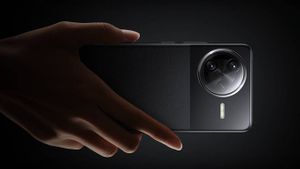JAKARTA - Usually artificial intelligence (AI) is used to improve the appearance and quality of photos. But now it's different with Qualcomm which plans to improve cellular performance and 5G smartphone coverage as well.
The San Diego, California, USA tech giant claims it is currently building AI capabilities into its modems to increase signal coverage, and further enhance the range of all radios connected to the device, including 4G and 5G.
AI technology will be included in the Snapdragon X70 modem that will ship this year and appear on smartphones in 2023.
The announcement came as Qualcomm held its 5G Summit event recently. In addition to plans to leverage AI, the company will also improve the performance of its high-speed short-range millimeter wave (mmWave) technology.
5G wireless technology consists of two technologies working in parallel, namely a wireless sub-6GHz signal, which can travel tens of kilometers at speeds of hundreds of megabits per second, and the powerful but limited mmWave, covering only hundreds of feet with a throughput speed of more than one. gigabits per second.
Qualcomm's senior director of product marketing, Ignacio Contreras, said AI-based inference can increase the range of mmWave by about 20 percent, although the technique can also be used to improve other mobile technologies.
The basis of this technology is, where Qualcomm teaches the modem what to do before facing real-world scenarios. The phone is always connected to the cell tower, reporting conditions and allowing the tower to optimize data transfer.
Launching PC World, Wednesday, May 11, with an AI-powered modem, he can be trained before entering the field. In the real world, the smartphone modem will communicate the current state as well as the expected network state, improving performance for all devices in the system. With mmWave, the phone may be able to switch to a new signal if available.
“With AI processing integrated into our system model, devices can not only report current conditions, but also predict conditions that will occur at any given time,” said Contreras.
Now every mmWave implementation requires a sub-6GHz spectrum anchor to provide control functionality. Freeing mmWave from that control would allow 5G to be used in more applications, such as fixed wireless broadband.
The English, Chinese, Japanese, Arabic, and French versions are automatically generated by the AI. So there may still be inaccuracies in translating, please always see Indonesian as our main language. (system supported by DigitalSiber.id)













